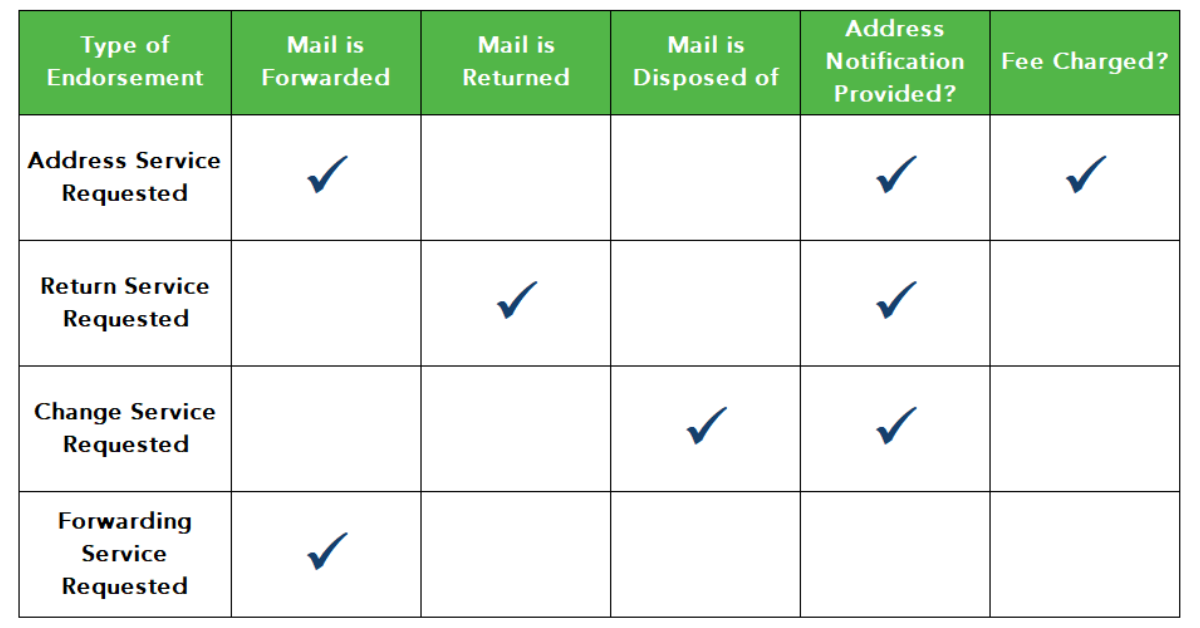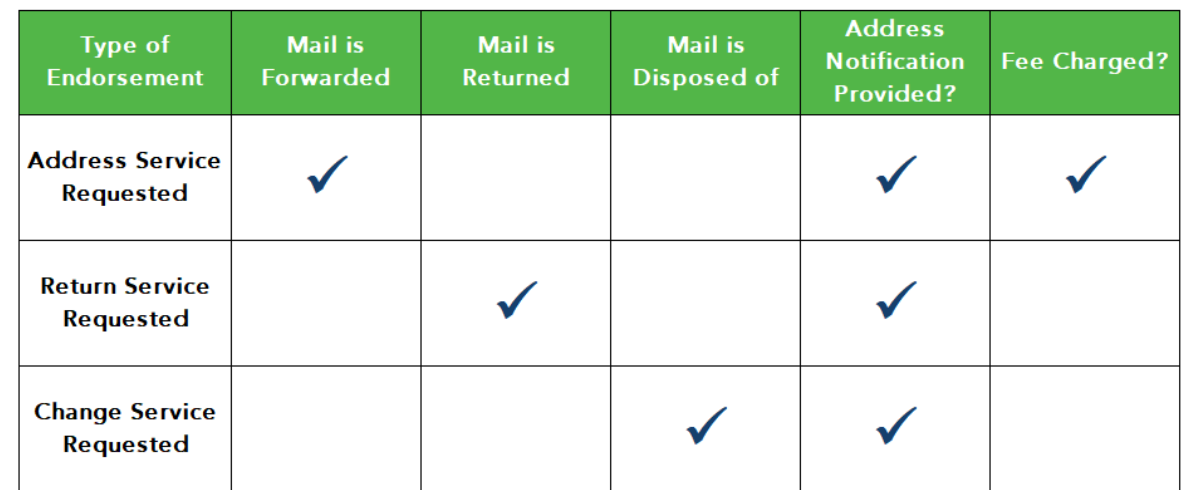In a very early blog post, I wrote about improving final bill collection rates. That blog post mentioned using the proper US Postal Service endorsement but didn’t go into any detail about them. As I was presenting my Improving Revenue Collections for Utilities presentation last week, it dawned on me that this topic deserved further discussion.
What are USPS endorsements?
You may have seen a USPS endorsement on mail you received, or even on utility bills you send and never given it a second thought. That’s pretty much where I was until I learned better a few years ago.
I had always assumed, while the wording may be slightly different, the endorsements were to tell the Postal Service to let you know when the recipient’s address had changed. That’s not entirely the case, as you will see.
Assuming your final billed customer has provided the Postal Service with a change-of-address order, here is what happens depending on the endorsement you selected (for more details, please refer to https://pe.usps.com/text/dmm300/507.htm):
Address Service Requested
Address Service Requested offers the ideal scenario – the mail is forwarded to your customer’s new address and you are provided with notification of the new address. However, this comes with a cost, as an address correction fee is charged for the service.
Return Service Requested
With Return Service Requested, as the name implies, the mail is returned to you with notification of the customer’s new address. You must then mail it again in a new, correctly addressed envelope.
Change Service Requested
Change Service Requested results in the mail being disposed of and notification of the customer’s new address provided to you. To my way of thinking, this is least desirable of the four endorsements because the final bill is neither forwarded to your customer nor returned to you to send to their new address.
Forwarding Service Requested
With Forwarding Service Requested, again as the name implies, the mail is forwarded, but no new address notification is provided. If you continue to mail delinquent notices to this customer, they will continue to be sent to the customer’s old address and you will have to trust in the Postal Service to forward the mail to your customer’s new address.
This graphic summarizes the four endorsements:

Obviously, if your customer hasn’t provided a change-of-address order, all the Postal Service can do is return the mail to you as undeliverable.
If your mailpiece doesn’t have an endorsement, then Forwarding Service Requested is followed.
Which is the best option?
Now that you understand the differences between the four endorsements, which one is the best option for your utility? At first glance, you might be inclined to shy away from Address Service Requested due to the fee, but upon closer inspection, you might decide this is the best option.
With the upcoming postage rate increase (you are aware that postage rates will increase on August 29, aren’t you?), the fee for a mailed address correction notice will be $.67. The cost of a first-class stamp will also increase to $.58. Therefore, having the post office forward the final bill and provide you with an address correction notice will cost $.09 more than either remailing the returned bill or printing a duplicate and mailing it – the options available with Return or Change Service Requested. Is it worth nine cents to have the Postal Service forward the mail directly to your final billed customer and not have to resend it from your office?
National Change of Address
If you use an outsource vendor to print and mail your bills, there is a strong possibility they use the USPS National Change of Address (NCOALink) database to check for address changes, and make the necessary corrections, before your bills are mailed. If this is the case, then the likelihood of sending a final bill that is undeliverable should be much less than if you print and mail your own bills.



